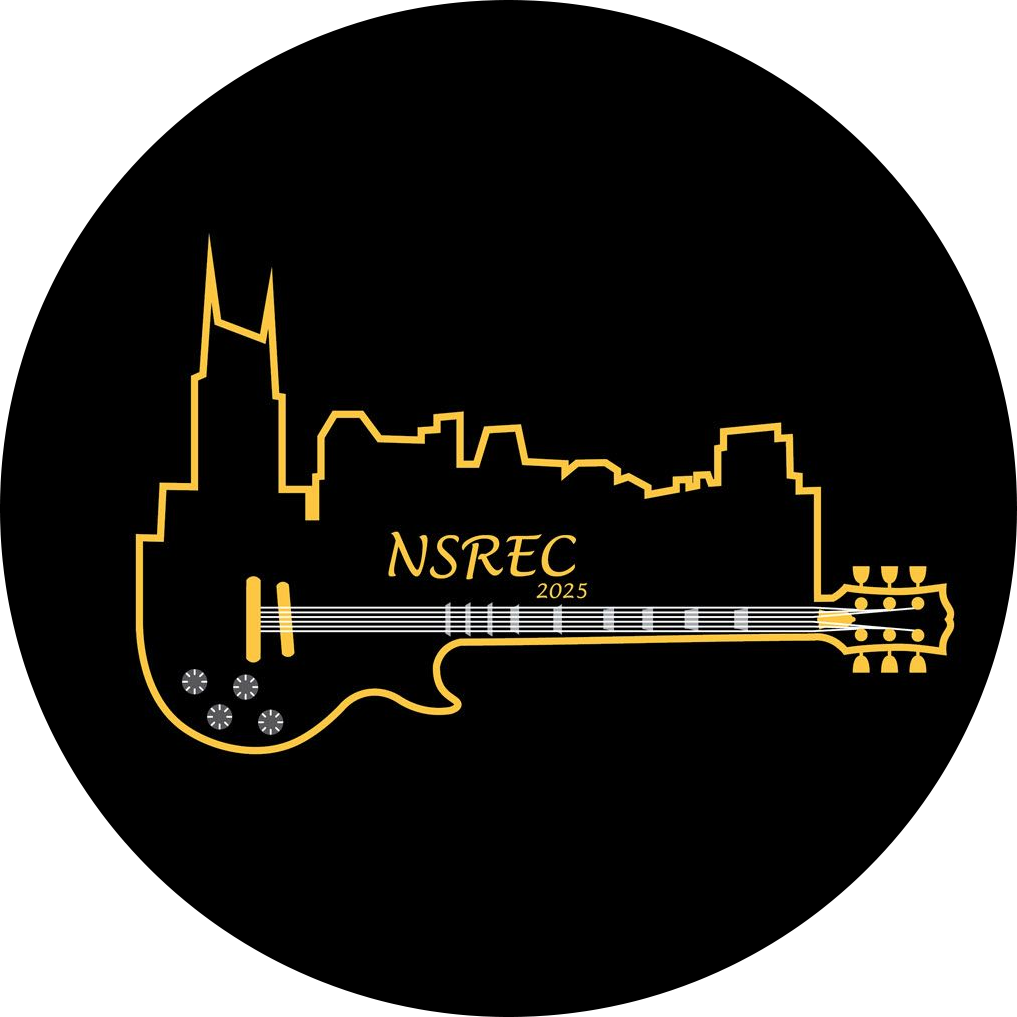2025 IEEE NSREC TECHNICAL PROGRAM
SESSION E SCHEDULE
NASHVILLE RENAISSANCE HOTEL, NASHVILLE, TN
WEDNESDAY, JULY 16, 2025
SESSION E
Grand Ballroom 2-3
ENVIRONMENTS, FACILITIES, AND DOSIMETRY
1:30 PM
SESSION INTRODUCTION
Chair: Matthieu Beaumel (SODERN)
E-1
1:35 PM
Analysis of High-Energy Heavy-Ion SEE Results Through Standard-Energy Ion SEE Data
M. Sacristan Barbero1, R. Garcia2, I. Slipukhin2, D. Soderstrom2, K. Bilko3, N. Emriskova2, A. Waets2, D. Prelipcean2
- CIEMAT – CERN, Switzerland
- CERN, Switzerland
- Université Jean Monnet, France
This summary presents the results of several SEE measurements performed in two Single Event Effect testing facilities, such as CERN and NSRL. Besides, the results are compared to those obtained in another standard SEE facility like RADEF.
E-2
1:50 PM
P-I-N diodes for Displacement Damage Monitoring in a Heavy ion Space Radiation Environment
D. Bennett1, V. Pan1, J. Vohradsky1, L. Tran1, D. Bolst1, K. Aoki2, T. Nakaji2, H. Mizuno2, H. Takei2, T. Inaniwa2, I. Anokhin3, M. Lerch1, M. Petasecca1, A. Rosenfeld1
- University of Wollongong, Australia
- Quantum Science Technology, Japan
- Institute for Nuclear Research, Ukraine
We’ve demonstrated that a newly developed p-i-n diode’s response is proportional to displacement damage dose, is energy and ion type independent and can be used as a damage monitor in a mixed space radiation environment.
E-3
2:05 PM
Advancing Radiation Hardness Assurance at CERN: Improved HEH Sensors for Enhanced Radiation Monitoring and Reliability System Study
A. Zimmaro1, R. Ferraro1, S. Fiore1, A. Masi2, S. Danzeca2
- CERN, France
- CERN, Switzerland
This paper presents a study of a new radiation sensor embedded in the new wireless IoT radiation monitoring system for electronics. Its advantages in terms of measurement uncertainty and radiation tolerance are presented
E-4
2:20 PM
Enhancing Performance of Optical Fiber-Based Sensor for Proton Dosimetry Through Pre-Irradiation Treatment
F. Fricano1, A. Morana1, C. Hoehr2, C. Campanella1, C. Bélanger-champagne2, M. Trinczek2, G. Melin3, T. Robin4, D. Lambert5, A. Boukenter1, E. Marin1, Y. Ouerdane1, P. Paillet5, S. Girard6
- Laboratoire Hubert Curien, France
- TRIUMF, Canada
- iXblue, France
- EXAIL, France
- CEA, France
- Université de Saint Etienne, France
We compare the performances of nitrogen doped silica-based optical fibers, one pristine and one pre-irradiated to monitor proton beams. Pre-irradiation results in sensitivity enhancement and improvements in Bragg peak reproduction, limiting quenching effect.
2:35 PM
Grand Ballroom 2-3
POSTER SESSION INTRODUCTION
Chair: Enxia Zhang, University of Central Florida
2:50 PM – 4:50 PM
Germantown 1-3
POSTER SESSION
Chair: Enxia Zhang, University of Central Florida
2025 IEEE NSREC POSTER SESSION E
NASHVILLE RENAISSANCE HOTEL, NASHVILLE, TN
WEDNESDAY, JULY 16, 2025
2:50 PM – 4:50 PM
Germantown 1-3
PE-1 Space Weather Launch Commit Criteria Study for Heavy Ion Susceptible Avionics
A. Destefano1, J. Martin2
- NASA, USA
- Amentum, USA
In this work, we study the effectiveness of a space weather launch commit criteria based on proton fluxes on mitigating risk due to avionics that are susceptible to heavy ions.
PE-2 Comparison of Active and Passive Adjustment of the Entrance Energy of Synchrotron Ions for Single Event Effect Testing
M. Eizinger1, W. Treberer-treberspurg2, P. Schieder2, A. Hirtl3, B. Seifert1
- Fotec Forschungs- und Technologietransfer GmbH, Austria
- University of Applied Sciences Wiener Neustadt, Austria
- Atominstitut, TU Wien, Austria
We compare two methods for varying the Bragg peak depth of carbon ions in silicon. Inserting passive degraders achieves finer resolution compared to variation of the initial energy, at the cost of stronger parasitic effects.
PE-3 Quenching Corrections for Proton-Irradiated Scintillators Using Geant4 Simulations of LET
E. Auden1, J. George1, A. Hoover1, C. Delzer1, G. Riley1, F. Liang1, T. Espinoza1
- Los Alamos National Laboratory, USA
Proton quenching effects in scintillators reduce light output similar to charge collection effects for high density particle tracks in silicon devices. We compare experimental and Monte Carlo quenching results in YSO and discuss quenching parameterization.
PE-4 Radiation Detection Based on Transient Non-equilibrium Body Potential under SOI-SBFETs Configuration
T. Zhang1, F. Liu1, L. Shu1, S. Chen1, Y. Huang1, Y. Wu1, J. Wan2, Y. Xu3, Y. Ding4, B. Li1, Z. Han1, T. Ye1
- The Institute of Microelectronics of the Chinese Academy of Sciences, Beijing 100029, China, China
- School of Microelectronics, Fudan University, China
- School of Microelectronics, Nanjing University of Posts and Telecommunications, China
- China Institute of Atomic Energy, China
A new transient method has been adapted to detect γ-ray. This method relies on non-equilibrium body potential, which shows advantages in fast testing, low process cost, and simple data processing.
PE-5 A Method for Low-Cost Cold Total Ionizing Dose Dosimetry and Irradiation
S. Katz1
- Johns Hopkins University Applied Physics Laboratory, USA
Irradiating samples on dry ice in an insulated box reduces the complexity, expense of, and space required for cold radiation testing of electronics. Polyethylene simulant allows dosimetry at room temperature prior to irradiation.
PE-6L Effect of Partial Volume Irradiation in p-i-n Sensors for NIEL Monitoring
Bennett1, V. Pan1, J. Vohadsky1, L. Tran1, Z. Pastuovic2, S. Peracchi2, R. Drury2, A. Perevertaylo3, I. Anokhin4, A. Rosenfeld1
- University of Wollongong, Australia
- Australian Nuclear Science and Technology Organisation, Australia
- SPA-BIT, Ukraine
- Institute for Nuclear Research, Kyiv, Ukraine
We demonstrated the effect of partial volume irradiation on long base p-i-n diodes response in terms of DDD monitoring and possible error in DDD determination associated with this effect.

